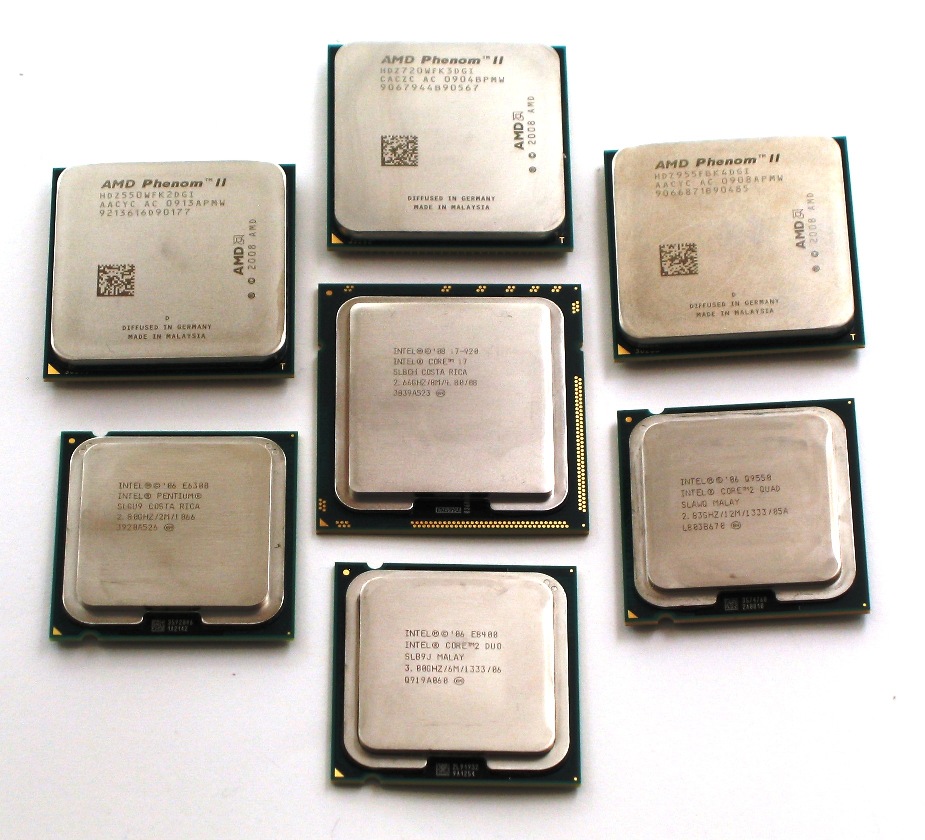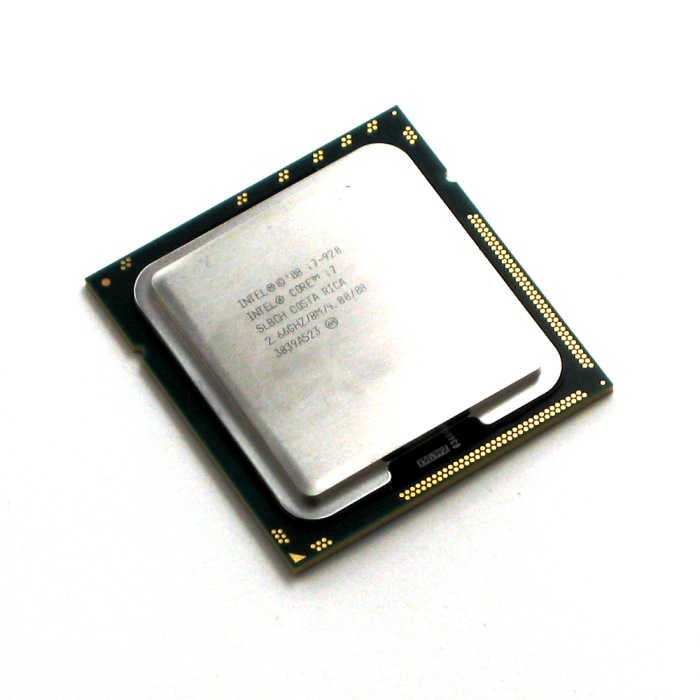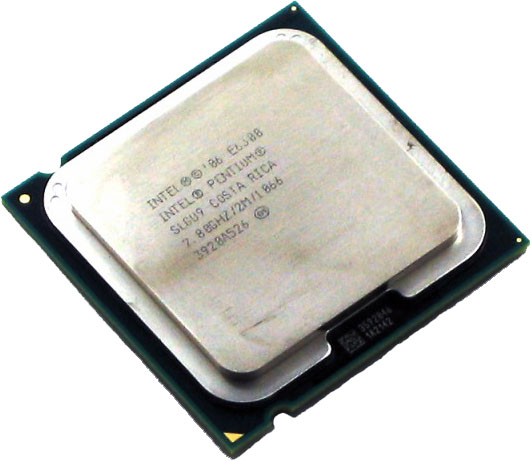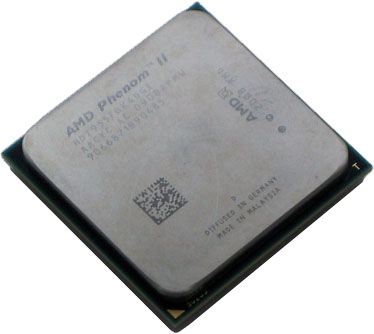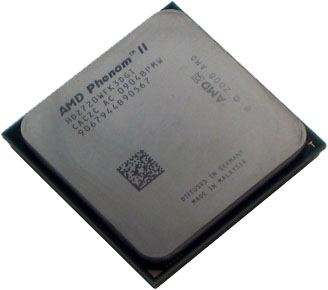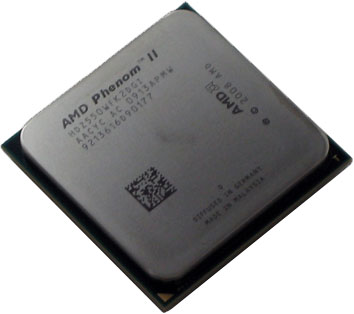Part 2: Building A Balanced Gaming PC
Processors
While a powerful GPU is certainly an important component in a balanced gaming PC, graphics performance alone does not guarantee an enjoyable experience. The processor (or CPU, as we've been calling it), amongst other factors, must cope with other tasks like physics and AI (artificial intelligence) calculations, on top of any background tasks running as you game.
Part 1: Intel Processors
Intel Core i7-920
Serving up solid performance and plenty of overclocking potential, the quad-core Intel Core i7-920 is the fastest CPU we will emphasize on for this series. After all, it has the headroom to exceed even Intel's flagship Core i7-975, and we're planning to address overclocked performance later on in the series.
This 45nm, Bloomfield-based, LGA 1366 processor is clocked at 2.66 GHz, has 4 x 256KB L2 caches, an 8MB shared L3 cache, and it features Intel’s Hyper-Threading and Turbo Boost technologies.
Intel Core 2 Quad Q9550
The Intel Core 2 Quad Q9550 provides a good look at what you can still get from the LGA 775 interface, ideal for the folks with slightly older P45/X38/X48 systems and not afraid to upgrade. This 45nm quad-core Yorkfield-based chip is clocked at 2.83 GHz, has 12MB L2 cache between its two physical die, and runs on a 1,333 MT/s FSB.
Get Tom's Hardware's best news and in-depth reviews, straight to your inbox.
Intel Core 2 Duo E8400
The Intel Core 2 Duo E8400 is a 45nm, dual-core Wolfdale-based processor with 6MB of L2 cache, also running on a 1,333 MT/s FSB. This once-legendary LGA 775 processor is clocked at 3.0 GHz, but is probably best known for its 4.0+ GHz overclocking potential.
Intel Pentium E6300
Because there is so much variance in Intel's dual-core processor lineup, no single processor best represented what Intel had to offer. Thus, we were torn between adding a Pentium E5200, E5300, or E6300 to the mix.
All of these 45nm Wolfdale-based chips have 2MB cache and offer big performance once overclocked. But the 2.8GHz Pentium E6300 offers higher stock performance for an extra $15 or so. Unfortunately, its 1,066 MT/s FSB does mean a lower available multiplier when it comes time to overclock.
Part Two: AMD Processors:
AMD Phenom II X4 955 Black Edition
The AMD Phenom II X4 955 Black Edition is a quad-core Socket AM3 processor with 4 x 512KB L2 cache, and a 6MB shared L3 cache. We could have used this Black Edition (BE) processor to simulate a flagship Phenom II X4 965 BE. But we’ll be overclocking later anyway. Besides, its slightly lower 3.2 GHz stock clock rate and significantly lower price tag combine to enable a more attractive price/performance ratio in favor of AMD's Phenom II X4 955 BE.
AMD Phenom II X3 720 Black Edition
We pay close attention to our comments section for each story that goes live, and we know that the AMD Phenom II X3 720 Black Edition is considered by some readers to be one of the best values in gaming processors.
This triple-core Socket AM3 CPU has 3 x 512KB L2 cache and a 6MB shared L3 cache. At 2.8 GHz, it’s the lowest-clocked Phenom II we’ll be testing in this series.
AMD Phenom II X2 550 Black Edition
The Phenom II X2 550 Black Edition is a 3.1 GHz, dual-core, Socket AM3 processor with 2 x 512KB L2 cache and a shared 6MB L3 cache. Of course, like all Phenom II Black Edition chips, the X2 550 has an unlocked multiplier and voltage ID.
As a reminder: there were also numerous processors released since our hardware was originally gathered, including AMD Athlon II and Intel LGA 1156 based Core i5 and i7 CPUs. You can check back here and here to see how these stack up to the models tested today.
Special thanks to Intel and AMD for arranging the CPUs needed to make this entire series possible.
-
What effect does having a motherboard that unlocks the 4th core on the X2 and X3 have? In power consumption and overall performance? I'm not asking a redo of all the data, just asking for speculation by someone more knowledgeable, if I can get it.Reply
-
Readers, don't use this as your only source of info before buying a PC. The writer left out the Intel i5-750 (which has a price range around $189-209, and outperforms all of those CPUs EXCEPT the i7.) Not only that, but LGA1156 motherboards are typically cheaper than the LGA1336 mother boards. Sure, the i7 has hyper threading, and triple channel memory support, but you're gaming here, not running high end video and 3D programs that would actually make great use of hyper threading. The only benefit I can see, is if you have the extra cash to throw around and you plan on running the applications. I guess a second benefit would be expandability, since you won't be able to upgrade the 1156 chips to Intel's next line of processors, the i9. The i5 can really over clock like a beast with the right motherboard, too.Reply
The writer also left out a great GPU: the Radeon 4870 1GB. Single GPU card, almost perfect for anybody considering running today's games at 22" 1650x1080. Of course, you'd want the 4890 for bigger than that, but still, most of these cards (especially the nVidia ones) are not quite price matched with the performance. A good 4870 can run you $170, and a great 4890 can run you $199. The nVidia "equivalents" (GTX 275, 285, and 260) all run about $260+.
I'm not sure why these two great products were left out (i5 and 4870,) but if there is a good reason, disregard what I said, but honestly, I don't see the good this article is doing without at least including them. -
dragonsprayer The secret to building a balanced gaming by pc, by WarpedSystems.Reply
First, i have been building overclocked only gaming pc's since 2003 with zero failures and 3 year cpu warranty.
#1 cheap cpu - 3.0c northwood - research that far back! CPU = 920 or 750 clocked to 3.8ghz or up too 4.2ghz
#1.5 cpu cooling: in 2004 we used thermalright xp-90, while we still use the thermal right true, we perfer the noctua - research and use the best coolers.
rule 1 of air cooling: dual fans! seal the fans - see photos!
#2 raid, we run dual raid with short stroking - we have been short storking since 2004. Your hard drive arm should move as little as possible a 4 x 1000TB set is 1000GB of raid0 for the c drive. the remaing 3TB is raid 10.
ssd: we run raid5 on hard drive and single ssd as the c drive, the raid 5 is data drive/game drive. This could be a raid0 or raid10.
Video card, you put all your money in the video card! A $2000 computer can have a GTX 295 use the i5 750. A $3000 air cooled system will have 2 video cards.
Power supply = .6 x true max power. this is usually 500 watts to 600 watts of max power. A 750, 850 or 1000 is best. NEVER GO LESS THEN 40% OF AVERAGE! 60% rule allows for a video card upgrade.
Case ...fans, fans and more fans. Anetec 1200 can not be beat for air cooling. All cases are copies of the antec 900. There are many good cases but you want 1 120mm in, 120mm out rear and 1 120 mm blowing on the video card. or 2 80's or bigger
antec 1200 has 2 rear 120mm and 2 front - we pull one section on both the 900 and 1200 and hide wires in the lower cubbie. That means we move the bottom cage up 1 slot, we remove 1 3 slot cage.
check THG links: http://images.google.com/images?hl=en&rlz=1T4GGIH_enUS236US236&um=1&q=warpedsystems+thg&sa=N&start=0&ndsp=18
finally bios tuning - memory and bus speed are critical, too high is bad!!! Too high is bad! fsb 1600 or 400x4 has been the sweet spot for years. Whether your running a G0 6600 at 3.6GHz 1600fsb or QX9600 at 1l multiplier at 4.4ghz 1600fsb works! Above that you run into many many issues. At fsb 1600 ram timmigs are ddr2 = 2.0-2.1v 4-3-4-10, 4-4-4-12, etc with core 2 ddr3 at 1.91v you have 7-7-7 with the i7/i5 you run 1.64v at 8-8-8-20 or 8-7-8-20. you find true 100% stablity with the correct timings and fsb and you do not get odd phase bus speeds.
yes, you can tweek the system to 1800mhz but do the tests and you find in most cases you spent more money to get little performance gains and lost stability -- 97-100% stablity. 100% = zero crashes - never!
temps, video card temps are key. Manually set fan speeds to stay under 75c with 70c the best. Stock temps and high cards run 80-85c even with good systems. You can use really good cooling to reduce that with antec 1200 etc. A 120mm fan does not fit an i7 mobo - we use 92mm fans in the door and hot glue it.
Conclusion, overclock your cpu, remember the difference between an i7 920 and 975 may only be factory setting and both run the same speed! Buy the best video card, use the best cooling case and cpu cooler. If your not using a SSD ....RAID RAID RAID! RUN RAID! IT IS EASY!
good luck, you find you get alienware level performance just as i did in 2003 after a few weeks of bios tuning! -
1898 BlackDays:Reply
Please, if you want to criticise something make sure you've understood it (read in this case) thoroughly. Otherwise you'll look like an idiot.
Anyway, this series is made out of win!
Thank you. -
knightmike This article truly is revolutionary. I have been waiting for an article like this since I began building my own PCs ten years ago. This article coupled with your CPU and GPU hierarchy chart will go a long way towards eliminating CPU/GPU bottlenecks. This article truly is the first of its kind and I hope to see it at least twice a year if not four times a year. Thank you.Reply -
knightmike In your conclusion, you state that a $100 CPU does a far better job than a $100 GPU when it comes to maxing out a low resolution like 1280x1024. Can you elaborate?Reply -
amnotanoobie Hooray! Now this is a good reference on the forums when people ask for bottlenecksReply -
scrumworks How can this take weeks to plan? Perhaps if one works 15mins a day.Reply
Good to see vanilla HD4890 puts up a serious fight for GTX 285. Not that it gets any credit for that.
You should stop using Vista. It's dead already.
